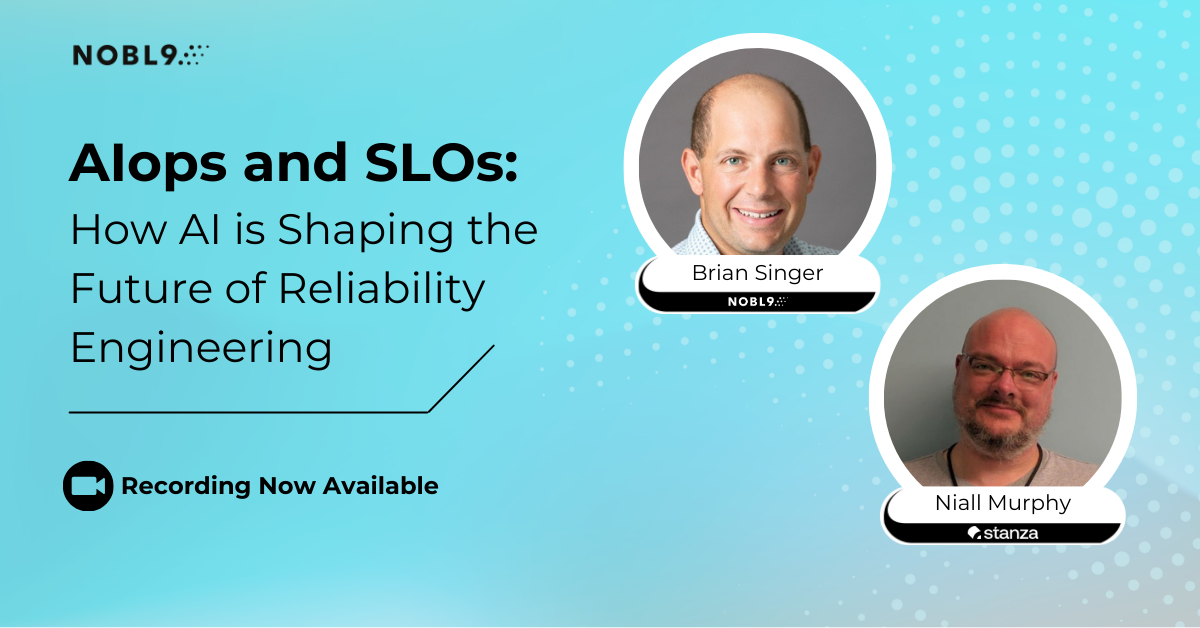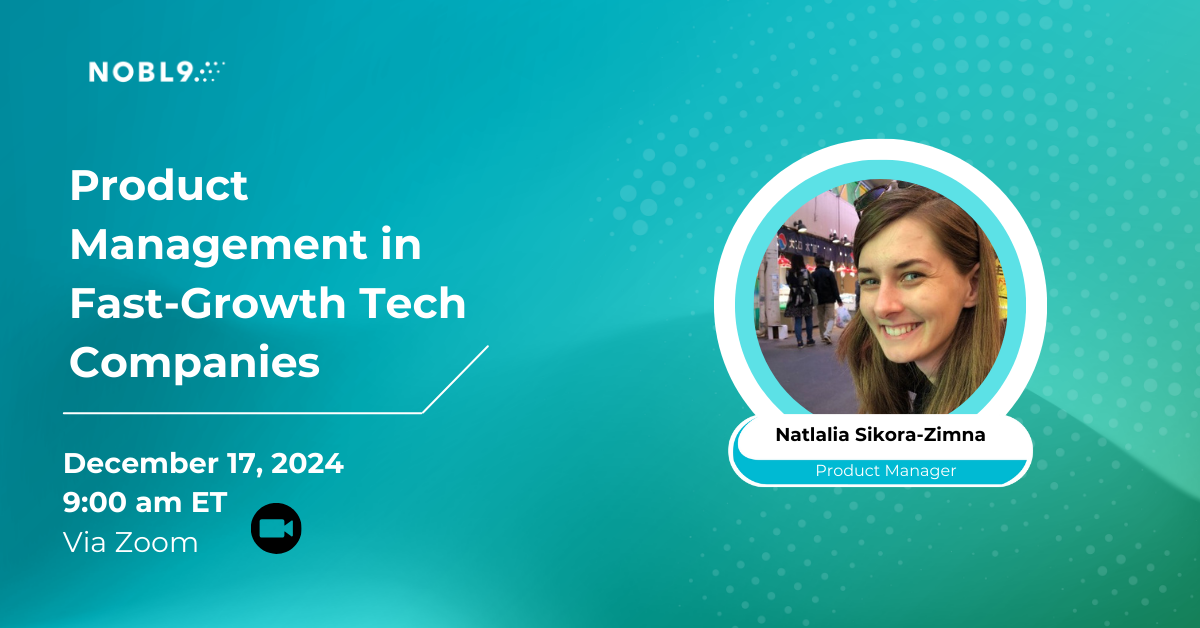More by Quan To:
Expanding SLO Capabilities – SLOconf 2022 Product Update Automating SLO-as-code with GitHub Actions Product Update Q3 - 2022 Nobl9 2021 year in review Lightstep Incident Response Alert Method Nobl9 2022 Product Update Product Update Q2 - 2022 Splunk Search Processing Language (SPL) and Nobl9 SLO Dashboard for Service Health Accelerating Into 2021 What’s New in Nobl9 - Product Update for Q2 of 2021 Product Update: Keeping our foot on the gas pedal| Author: Quan To
Avg. reading time: 4 minutes
Happy New Year! We hope you had a great holiday break and want to wish you all the best as we enter 2023.
While we recognize that 2022 was a challenging year for many, it proved to be an exciting one for Nobl9 and our customers. We did a lot in 2022, and I am proud of how well our team executed, staying laser-focused on delivering features customers need to successfully implement and scale their SLO strategies.
More powerful SLOs
Just prior to SLOConf in the spring, we launched Composite SLOs. Our customers expressed that they had different audiences for their SLOs and wanted a way to aggregate multiple SLI signals into a single tailored SLO. This allows people in the organization who are interested in a set of SLOs tied to a specific user journey to get a holistic view of the user experience. A Composite SLO is an SLO whose SLIs comprise up to 12 child SLOs. Each of these has its own individual error budget, and the Composite SLO has a composite error budget that reflects the overall health of all of its component parts. This allows you to get an idea of how an entire segment of your system is performing at a glance.
Our big announcement this fall was Replay. This feature allows you to go back in time when creating an SLO and pull in historical data to merge with your real-time SLI data. Nobl9 can now provide up to 30 days’ worth of reliability metrics right away, enabling you to see immediately whether your SLO targets have sufficient error budget remaining instead of needing to wait several weeks to determine whether your reliability target is correct.
More control
Another customer request was to add snooze functionality to alerts. To allow teams to temporarily pause noisy notifications about issues that they are aware of and perhaps already working to address, we launched the alert silencing feature. Alerts related to specific SLOs can now be silenced and reactivated programmatically and on demand, helping reduce alert fatigue.
For our enterprise customers logging in to Nobl9, we added the flexibility for Admins to decide whether the role for new SSO logins should default to User or Viewer. A poll to determine which one our customers preferred revealed a 50/50 split, so we decided to let each customer decide what’s right for their organization.
Customers also asked if they could have SLOs on their Nobl9 Agent deployments. We thought that was a great idea and added Agent health metrics. You can now poll for those metrics, push them to Prometheus or any metrics solution, and then bring them in to Nobl9 so you can monitor the Agent like any other service in your organization.
For customers using sloctl, we added a highly requested feature to verify a command before applying it. The dry run functionality is similar to what’s supported in common CLI configuration-as-code tools and allows customers to test a change without making any changes to production. We’re seeing customers leverage this with their CI/CD pipelines to verify YAML changes before submitting their SLO-as-code updates.
Better navigation
As a result of our ongoing dialog with customers, we have made a lot of UI improvements. In addition to adding pagination in the grid view and support for deep linking to the Service Health Dashboard, we’ve increased the number of support links that can be included in an SLO from 1 to 20 and introduced labels for filtering and grouping SLOs. These changes have had a huge impact on how customers are using Nobl9.
Better docs
Our documentation got a massive overhaul at the beginning of the year as we moved to Docusaurus and revamped a lot of our public docs. Since then they have continued to evolve and grow, as we add more features. Recently we launched an additional educational resource, SLOcademy, to help new users get up to speed with Nobl9 quickly.
Integrations
Integrations continue to be our bread and butter. We added several new data source integrations in 2022, including:
- Sumo Logic
- Instana
- Google Cloud Monitoring with Workload Identity
- Influx
- Pingdom Transactions
In addition, we updated several existing integrations, adding support for retrieving additional metrics from ThousandEyes, making Direct connections to Dynatrace and Lightstep, and retrieving metrics data from Splunk with the mstats command. We also introduced jitter to the Nobl9 Agent for all data source integrations, to spread out API bursts on the endpoint.
Beyond data sources, we released an officially supported Docker image for sloctl to help customers deploy it to their own environments, and we launched Git integrations with GitLab and GitHub. These further complement our SLO-as-code story and enable customers to easily integrate sloctl into their Git environments.
Customers who have adopted OpenSLO and want to use Nobl9 can leverage the OpenSLO converter to bring their YAML into Nobl9. We also enhanced sloctl with the option to return client IDs/secrets in YAML, so customers can automate creation of Agents via sloctl. This has been a huge win for customers deploying and managing large numbers of Agents.
Finally, one of the biggest SLO-as-code requests we had from customers was to support Terraform. We released a Terraform provider earlier in the year and have updated it to support all the features that sloctl provides.
Free Edition
Our big announcement during AWS re:Invent was offering Nobl9 for free. That’s right, no strings attached – anyone can sign up for a free Nobl9 account and create up to 20 SLOs. We’re seeing a lot of excitement from customers trying out SLOs for the first time, and we hope this offering continues to drive SLO adoption everywhere.
Don’t forget to check out SLOcademy and our intro to Nobl9 video if you want to try out our Free Edition. To sign up and get started, just go to nobl9.com/signup.
Wrapping it up
I continue to be excited about the future of SLOs, and love being at the forefront of the effort to bring the best SLO tools to the industry. I look forward to seeing what new developments the next year brings!
If you haven’t had a chance to try Nobl9 yet, sign up for our Free Edition.
If you’d like to learn more about the platform, we’re also available on the OpenSLO Slack workspace in the nobl9-users channel.
Have a prosperous and amazing 2023!









.png?width=1200&height=628&name=Building%20Reliable%20E-commerce%20Experiences%20(24).png)
.png?width=1200&height=628&name=Building%20Reliable%20E-commerce%20Experiences%20(22).png)
.png?width=1200&height=628&name=Building%20Reliable%20E-commerce%20Experiences%20(19).png)










Do you want to add something? Leave a comment